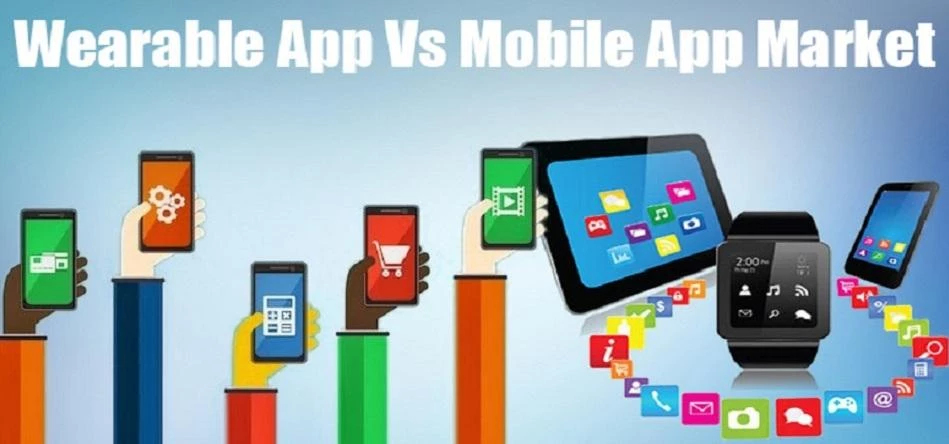
Partner Article
Wearable App Market apart from Mobile App Market?
As the desktop internet came in, it took nearly two decades to enter in every home over around the globe, thus it popularized at a slow pace. However, same can’t be said for mobile apps that reached to the handheld devices users within a decade.
And now in the present times, it’s the wearable app market that enjoys wide prominence and has already made its place in advanced countries within half decades. Unlike mobile apps, wearable has different use cases and purposes thus the wearable app market has better perspectives still it has set itself apart from the mobile app market for growth and prospects.
How Wearable Devices are different from the smartphones?
As we speak of handheld devices like smartphones or tablets they stay with the users almost all the time, but not all the time, and have enough CPU power and battery life to attain heavy tasks in a beautiful manner. In many ways, these devices work as an independent minicomputer in real meaning.
On the contrary, wearable devices stay in touch of bodies of users always unless, users willingly keep them off. However wearable has limited CPU power, battery life and connectivity. This way wearable devices are required to function in tandem with a smartphone or other devices to exchange data in real-time. Wearable devices are capable of establishing a connection with The Internet directly while also synchronizing the functions with smartphones like powerful application for real-time and high connectivity, data processes, and data presentations.
Wearable devices can plant on your wrists (Smart Watch), on eyes (Smart Glasses), chest/belly/thighs/legs (Belts with sensors), and in body organs (Monitors). This way, wearable offers huge scope of data collection for varied purposes and in a number of ways.
How Wearable Apps different from the Smartphones Apps?
Above we explored the difference between smartphones and wearable devices and here we explore how wearable apps differ from the smartphone apps.
Device Screen Size
Look at the size of smart watches; they are just so tiny, while smart glasses are famed for the virtual screens. Same way, smart belts and internally implanted devices in the body relies on the smartphones to display data, as those devices have no screens at all. Due to this very reason it’s impossible to display content in smartphone and demand altogether different paradigms to address it.
App Functionality
Owing to hardware limitations, a number of wearable apps barely have any independent functionality except collecting data from the attached sensors. Mostly wearable apps act as mere extensions of the smartphone apps and execute some designated activities, like displaying notifications that forwarded either directly or through smartphone apps; displaying time, weather, calendar, etc. like basic things used in day-to-day life.
App User Interface
On wearable apps, user interactions rarely take place, or don’t even exist at all, owing to the size of the screens if screens are existing. Among the others, smart watches present tiny screens to display limited content in limited forms. You can find the same in some smart bands and a little in smart glass. Primarily, wearable apps are extensions of other big devices’ apps, like smartphones apps. Thus, most user interactions take place on smartphone apps or through it. Users have no chance at all to interact with wearable apps in a direct manner.
Wearable App Market
You need to have a brilliant understanding of wearable devices and wearable apps. Accordingly, it’s easy to understand the wearable app market and its diversities owing to differences in its applications and implementations against the smartphone apps.
Several of wearable app market segments comprise of:
Healthcare App Market
Healthcare wearable applications enjoy huge market. Mobile apps can perform marvelous things in healthcare and medical niches with the help of sensors while wearable devices offer the most suitable platform to accumulate the data in an accurate manner, transmitting to the smartphone apps in real-time, that’s not possible otherwise.
Healthcare and medical industry use the wearable apps to collect the clinical data such as:
Heartbeats of patients Blood pressure pH and other tests Calories burned Steps walked Running speed Tourism and Hospitality app market
Travels, tourism, and hospitality industry go for wearable app to facilitate location-based tracking of:
The places of interests Food and drink places Keyless/contactless access Offering incentives Integrating with Bluetooth and Beacon like applications for micro-location points
Financial app market
Various financial institutions, particularly banks make most of the grand opportunities to explore the wearable application possibilities including: Balance checking Money transactions Locating the nearest bank or ATM
Conclusion
Mobile app market is quite stable and is incessantly progressing owing to the fact that wearable apps heavily rely on the mobile apps. This is the reason mobile app developers need to develop a mobile app first then the wearable app as its extension.
This was posted in Bdaily's Members' News section by Octal Info Solution Limited .








 How to make your growth strategy deliver in 2026
How to make your growth strategy deliver in 2026
 Powering a new wave of regional screen indies
Powering a new wave of regional screen indies
 A new year and a new outlook for property scene
A new year and a new outlook for property scene
 Zero per cent - but maximum brand exposure
Zero per cent - but maximum brand exposure
 We don’t talk about money stress enough
We don’t talk about money stress enough
 A year of resilience, growth and collaboration
A year of resilience, growth and collaboration
 Apprenticeships: Lower standards risk safety
Apprenticeships: Lower standards risk safety
 Keeping it reel: Creating video in an authenticity era
Keeping it reel: Creating video in an authenticity era
 Budget: Creating a more vibrant market economy
Budget: Creating a more vibrant market economy
 Celebrating excellence and community support
Celebrating excellence and community support
 The value of nurturing homegrown innovation
The value of nurturing homegrown innovation
 A dynamic, fair and innovative economy
A dynamic, fair and innovative economy